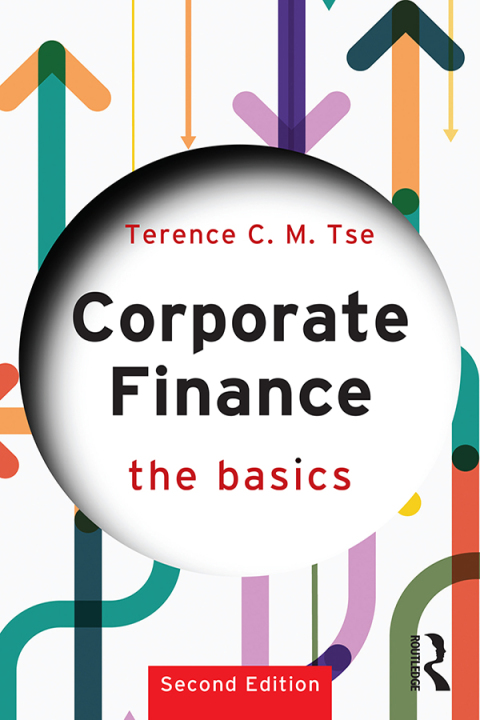Description
Efnisyfirlit
- Cover
- Half Title
- Endorsements
- Series Page
- Title Page
- Copyright Page
- Dedication
- Table of Contents
- List of Figures
- List of Tables
- About the Author
- Acknowledgements
- Foreword by Alvin Miu
- Introduction
- 1. Financial Statements
- Chapter Overview
- Income Statement
- Revenue and Costs
- EBITDA
- How the Money Made from Operations is Distributed
- Beyond (Beneath) Net Income
- Balance Sheet
- What the Balance Sheet Really Says
- Cash Flow Statement
- Summary
- 2. Financial Decisions and Investment Criteria
- Chapter Overview
- What is Corporate Finance?
- Capital Budgeting
- The Time Value of Money and Present Value
- Discount Rate and Risk
- Discount Rate and the Cost of Capital
- Investment Decision-Making Criteria
- Net Present Value
- Payback
- Internal Rate of Return
- Summary
- Appendix: How to Discount Cs that Go on Forever
- Perpetuity
- Growing Perpetuity
- 3. Free Cash Flows
- Chapter Overview
- Measuring Value
- The Peril of Profit
- Cash is King
- The Makeup of FCF
- 1 Cash Flow from Operations
- 2 Capital Expenditure
- 3 Change in Net Working Capital
- FCF
- Considerations when Estimating FCF
- Relevant Cash Flows Only
- Erosion and Synergy
- Sunk Costs
- Allocated Costs
- Summary
- Appendix: Pulling it all Together in an Example – MC Production, Inc.
- CFO
- CAPEX
- NWC
- FCF and Conclusions
- 4. Net Working Capital Management
- Chapter Overview
- How NWC is Calculated
- Current Assets
- Current Liabilities
- Implications of NWC
- Managing NWC
- Managing NWC in Days
- Implications of Managing Working Capital on Free Cash Flows (FCF)
- Increasing the Amount of Financing
- Improving FCF
- The Misconception of Negative NWC
- Summary
- 5. Debt
- Chapter Overview
- Bank Loans
- Cost of Capital Provided and Return to Investors: Two Sides of the Same Coin
- Bonds
- Basic Makeup of a Typical Bond
- Calculation of Bonds
- The (Inverse) Relationship between Bond Price and YTM
- Factors Determining the Return that the Lenders Require
- Available Alternatives
- Borrower’s Credentials
- Market Views
- Implications of Debt on Capital Structure
- Leverage
- Tax Benefits
- Economic Downturn, Covid-19 and Debt
- Summary
- References
- 6. Equity
- Chapter Overview
- Characteristics of Shareholders’ Equity
- rE > rD
- Determining the Cost of Equity
- Method 1: Dividend Growth Model
- Capital Asset Pricing Model (CAPM)
- Revisiting CAPM
- CAPM for Small, Private Businesses
- Weighted Average Cost of Capital
- Bringing NPV, FCF and WACC Together
- Summary
- Appendix: Calculating the Cost of Capital – MC Production, Inc.
- Cost of the Bond
- Cost of Equity
- WACC and FCF Discounting
- 7. Mergers and Acquisitions (I)
- Chapter Overview
- Terminology
- Takeover
- Merger
- Acquisition
- Mergers and Acquisitions
- Buyout
- Leverage Buyout and Private Equity
- Venture Capital
- Alternatives to M&A
- Organic Growth or “Greenfield”
- Strategic Alliances
- Formats of M&A
- M&A Approaches
- Rationale behind M&A
- 1 Operational
- 2 Industry-specific
- 3 Strategic
- 4 Financial
- 5 Personal
- Summary
- 8. Mergers and Acquisitions (II)
- Chapter Overview
- How can a Company be Valued?
- FCF-based Balance Sheet
- The Three Most Common Valuation Methods
- 1 WACC Method
- 2 Industry Comparables
- 3 M&A Comparables
- Putting the Three Approaches Together
- Important Points about Company Valuation
- There is no Single Value of a Company
- There are Inherent Biases
- Parameters have Impact
- The Final Transaction Value is Likely to be Different
- Summary
- 9. Corporate Finance for Growing Businesses
- Cash – Still One of the Fundamentals of Finance
- Dos and Don’ts when Valuing (Tech) Start-ups
- A Look at the Revenue …
- … and Cost
- Summary
- 10. Corporate Finance: The Big Picture
- Chapter Overview
- From Economics and Accounting …
- … To Corporate Finance
- 1 Capital Budgeting
- Investment Criteria
- FCF
- M&A and Company Valuation
- 2 Capital Structure
- Debt
- Equity
- WACC
- 3 Working Capital
- The Future of Corporate Finance
- Index






Reviews
There are no reviews yet.